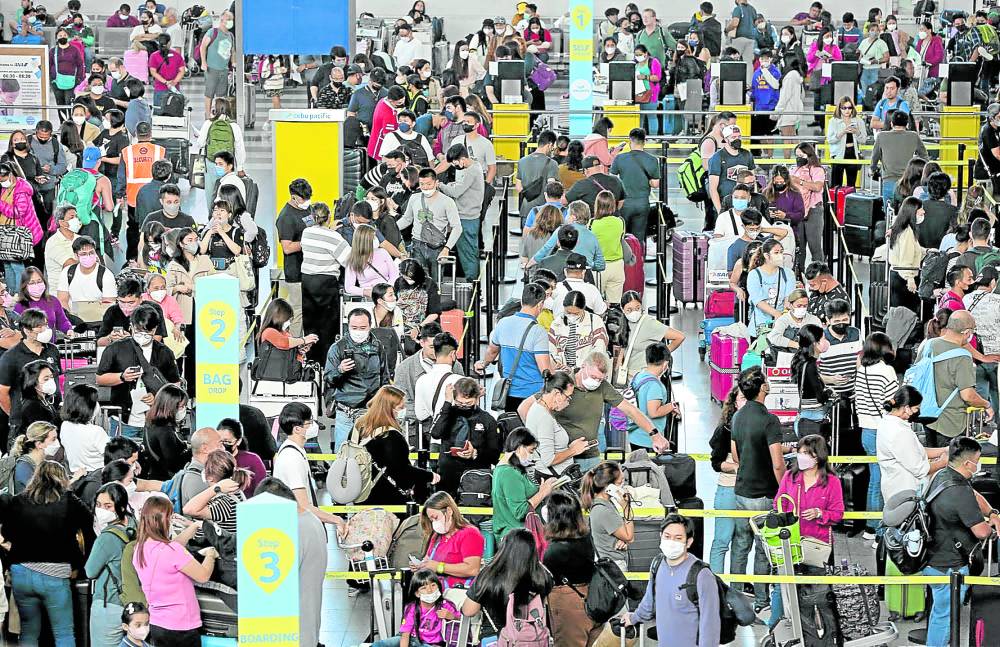
NEW YEAR MESS The temporary closure of Philippine airports stranded about 65,000 passengers. —RICHARD A. REYES
Amid the ongoing probe of the Jan. 1 air traffic navigation mess, Infrawatch PH called on lawmakers to assess economic losses arising from flight delays and additional expenses shouldered by passengers to quantify the liability of the Civil Aviation Authority of the Philippines (Caap).
Terry Ridon, convener of the policy think tank, told the Inquirer that lawmakers should “determine the extent of liability of Caap to passengers and airlines for the canceled, delayed and suspended flights.”
The probe on the New Year shutdown of Philippine airspace should reveal the “losses and additional expenses incurred by passengers and airlines as a result of the incident,” he said.
“The total amount of losses and expenses constitutes as the total amount of damages which may be charged against Caap, a GOCC (government-owned and -controlled corporation), in a civil suit,” Ridon said.
Earlier this month, transport advocacy group The Passenger Forum urged stranded passengers to sue Caap for damages following the air traffic navigation management mess.
In addition, Ridon said a detailed summary of the events that had transpired should be produced as well so the lawmakers could point out if the incident was just a technical issue or negligence in terms of maintenance.
“A clear narration of facts will guide [lawmakers] on how accountability should be exacted from the incident,” he said.
“If it is a result of negligence, the [Congress and Senate] should determine whether it rises to the level of a failure of leadership by Caap officials, for their failure to plan proper maintenance schedules in operating Naia (Ninoy Aquino International Airport),” he added.
Caap director general Manuel Antonito Tamayo, during a Senate hearing on Thursday, said they were taking full responsibility for the air traffic navigation fiasco.
“We commit to see through this ordeal and remain transparent in all our dealings and of service to the Filipinos in ensuring that our skies are safe,” he said.
On Jan. 1, the air traffic management facility being handled by Caap went offline due to a power outage, resulting in grounding of more than 300 flights. Some 65,000 passengers were stranded at the airports due to this incident.
The GOCC earlier admitted the system that failed was already “outdated,” raising the need to establish a backup system to ensure this technical issue would not happen again.

